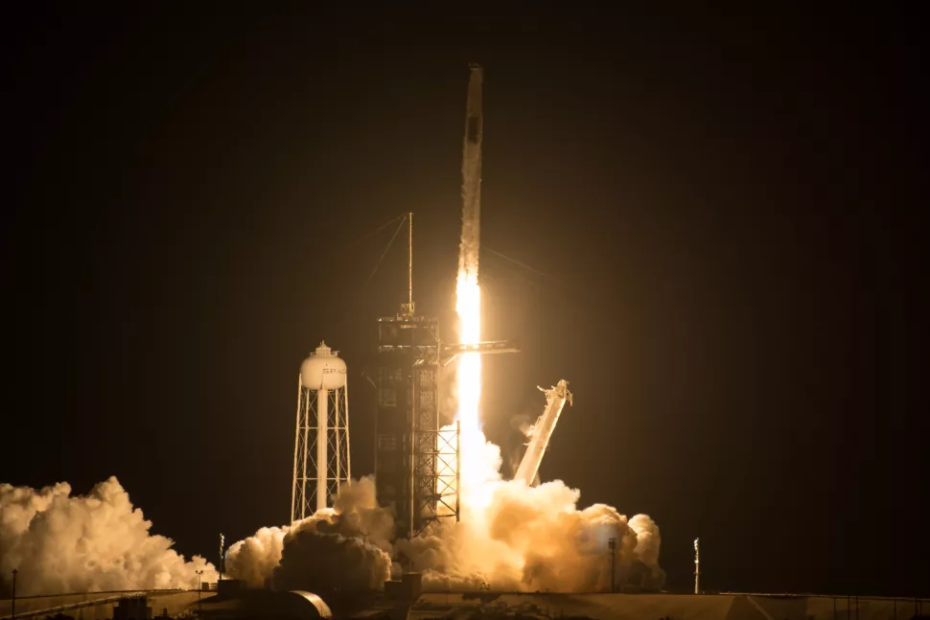a bid to mark the resurgence of American lunar exploration after more than half a century, a significant technical hitch has hit the first moon mission. The Paragreen One robot lander, launched earlier today, has encountered an early snag as it struggles to orient its solar panels toward the Sun. Astrobotic, the company spearheading the mission, is diligently working to address the issue. However, if the problem persists, the entire mission might face an uncertain future.
Our science correspondent, Jonathan Amos, provides an overview of the situation. The launch from Cape Canaveral in Florida earlier today appeared flawless. The Paragreen craft, positioned atop the new Vulcan rocket, soared into the sky, setting the stage for a historic lunar endeavor. However, approximately seven hours after liftoff, Astrobotic released a statement disclosing an anomaly in the spacecraft.
Astrobotic, a private exploration company based in Pittsburgh, highlighted that the spacecraft faced an issue during the standard checkouts. These checkouts involve the meticulous examination of the spacecraft’s systems, ensuring that everything is in proper working order after detaching from the rocket. One crucial step in this process is the orientation of the spacecraft’s solar panels toward the Sun, vital for maintaining power throughout the mission.
Unfortunately, the Paragreen One lander has been unable to stably point its solar panels at the Sun, constituting a substantial roadblock for the mission. While the specifics of the issue remain unclear, it is evident that the spacecraft is encountering difficulties in maintaining a consistent alignment with the Sun.
Astrobotic’s engineers are actively working to resolve the problem. The company, with its extensive experience in space exploration, is likely implementing contingency plans and utilizing a fault tree to identify and rectify the anomaly. Despite the setback, it is essential to note that the mission is not definitively terminated. The engineers are engaged in a comprehensive analysis of the situation, exploring potential solutions to ensure the successful continuation of the lunar exploration initiative.
Spacecraft, by design, possess a degree of autonomy. In the face of anomalies, the spacecraft can recognize deviations from its intended operations and prioritize essential systems. In the case of the Paragreen One lander, maintaining power through its solar panels and communication with Earth are paramount. As engineers work to troubleshoot the technical issue, the spacecraft is likely taking autonomous measures to safeguard critical functions.
Jonathan Amos emphasizes that the mission’s outcome is far from certain at this stage. Astrobotic’s team is diligently working through the intricacies of the technical problem, drawing on their expertise and the spacecraft’s autonomous capabilities. The situation underscores the inherent risks and challenges associated with space exploration, even in an era marked by advanced technology and meticulous planning.
Solar panels are a standard power source for space missions, including lunar endeavors. The reliance on solar energy is prevalent due to its efficiency and sustainability. While some spacecraft opt for nuclear batteries, utilizing radioisotopes for power generation, the majority choose solar panels as a cost-effective and reliable alternative.
In conclusion, the revival of American lunar exploration has encountered an unexpected hurdle with the Paragreen One robot lander facing challenges in aligning its solar panels. Astrobotic’s dedicated team is actively addressing the technical anomaly, employing both manual and autonomous measures to rectify the situation. The outcome remains uncertain, emphasizing the unpredictable nature of space missions and the perseverance required to overcome setbacks. As the world awaits updates on the mission’s progress, the quest for renewed lunar exploration hangs in the balance, navigating the complexities of space exploration in the 21st century
